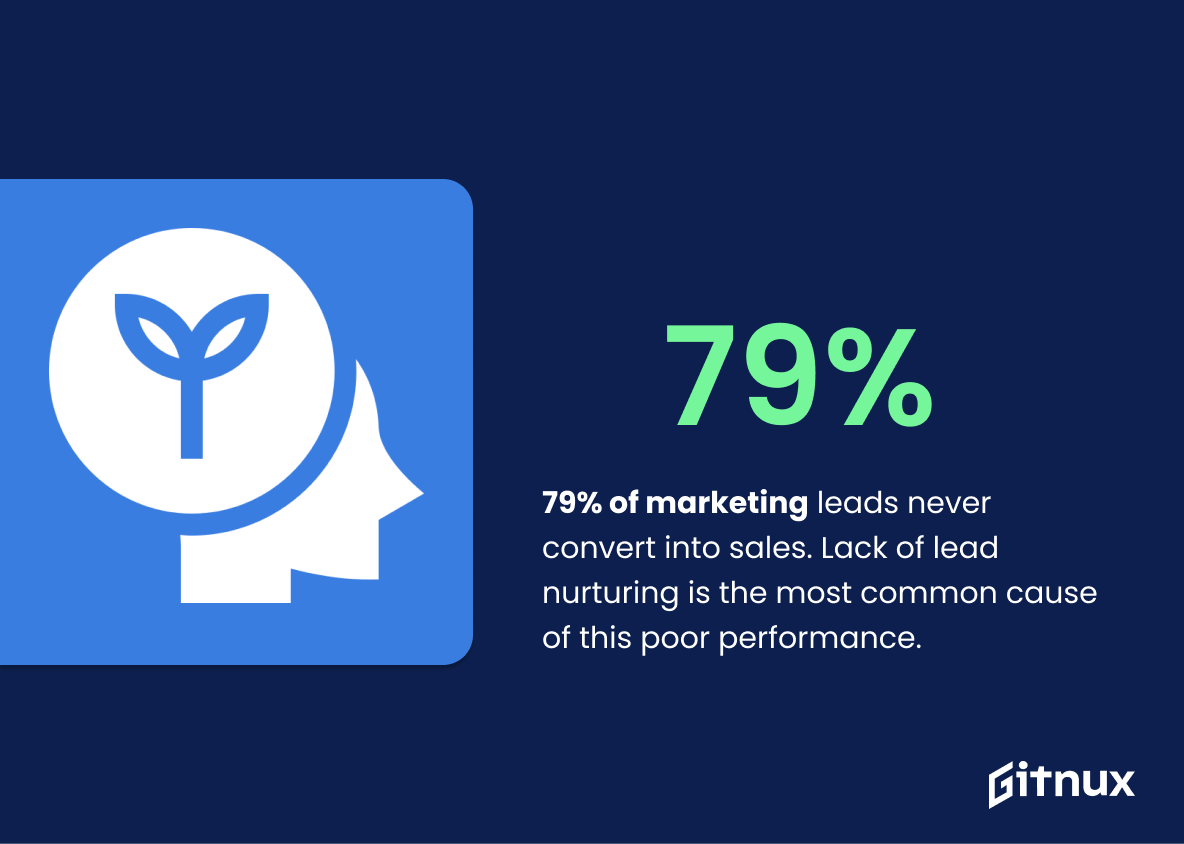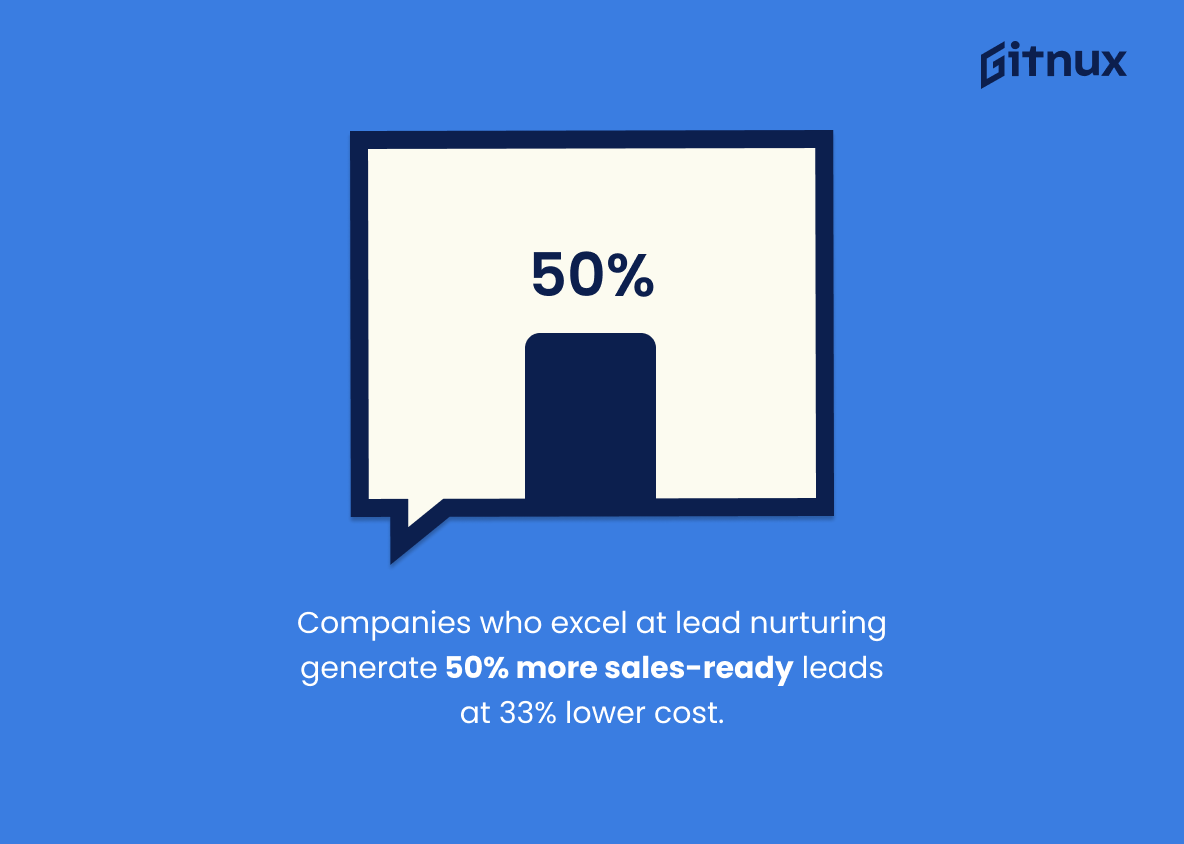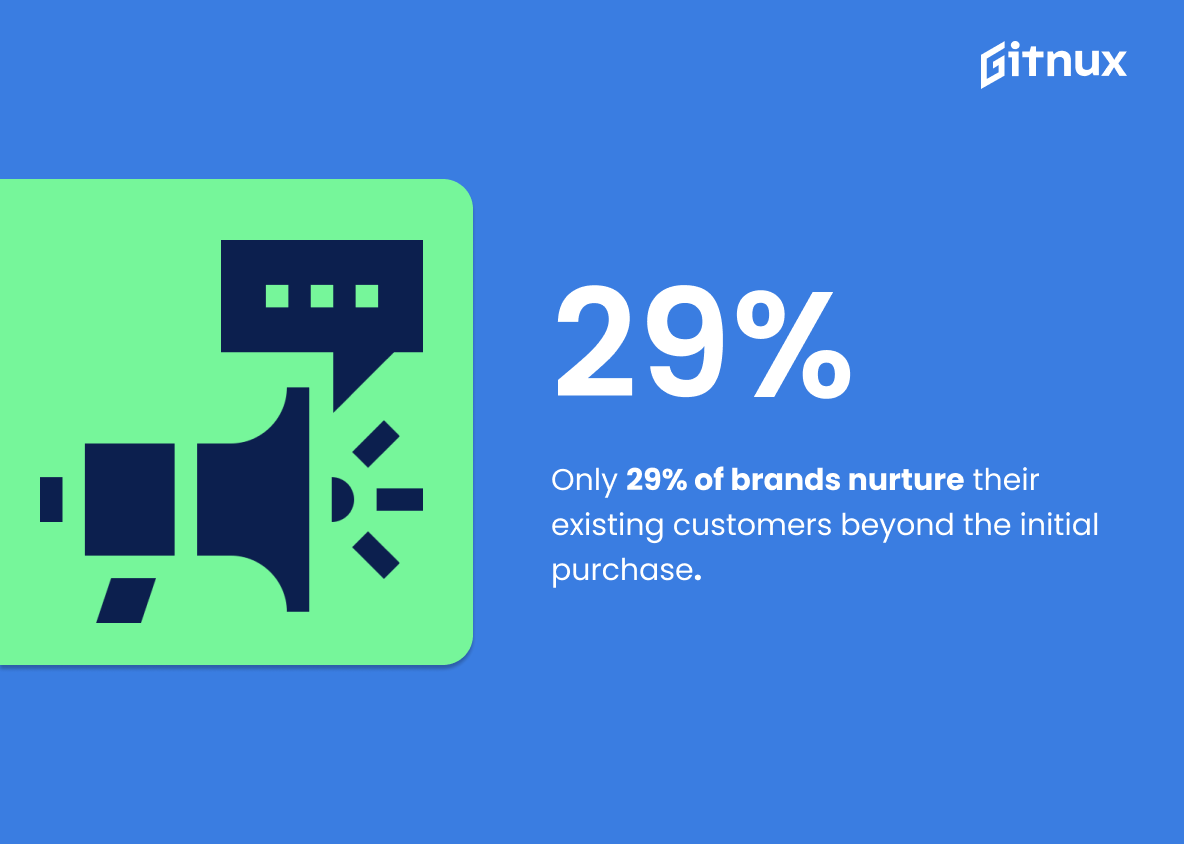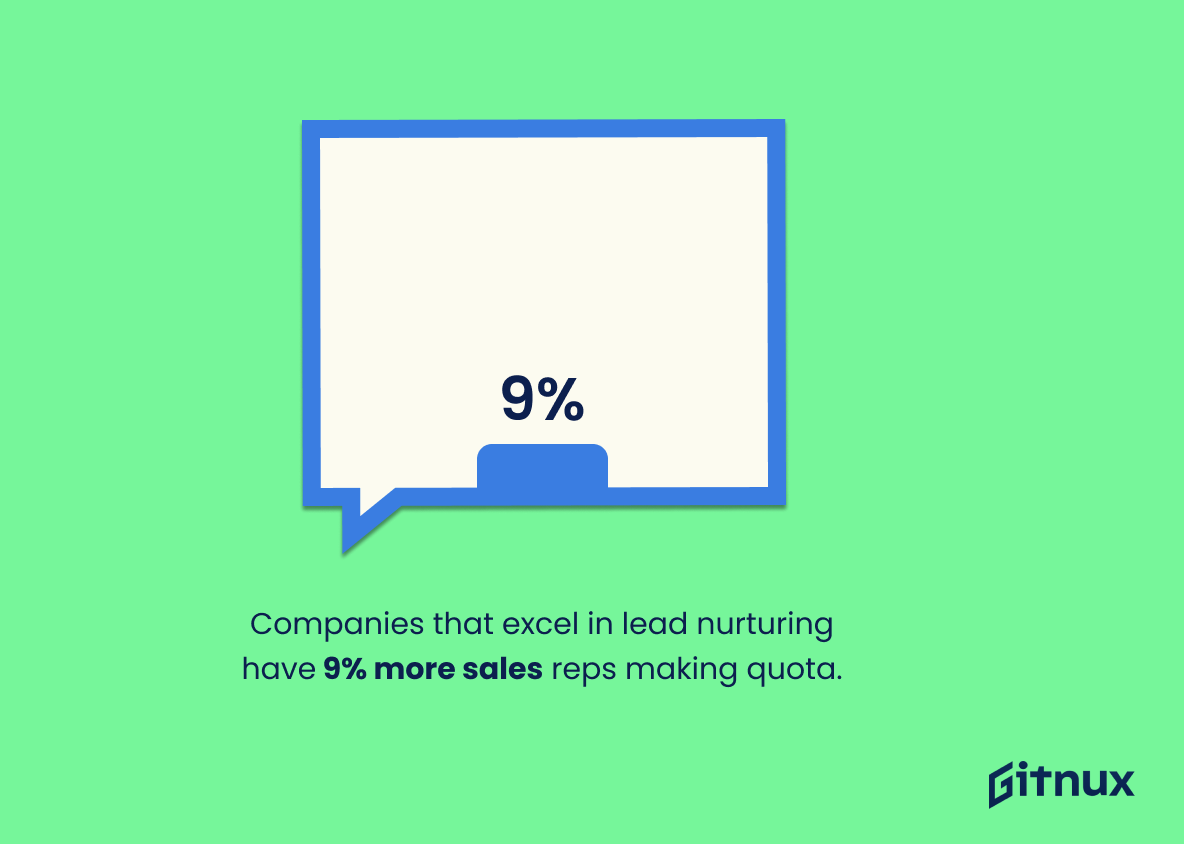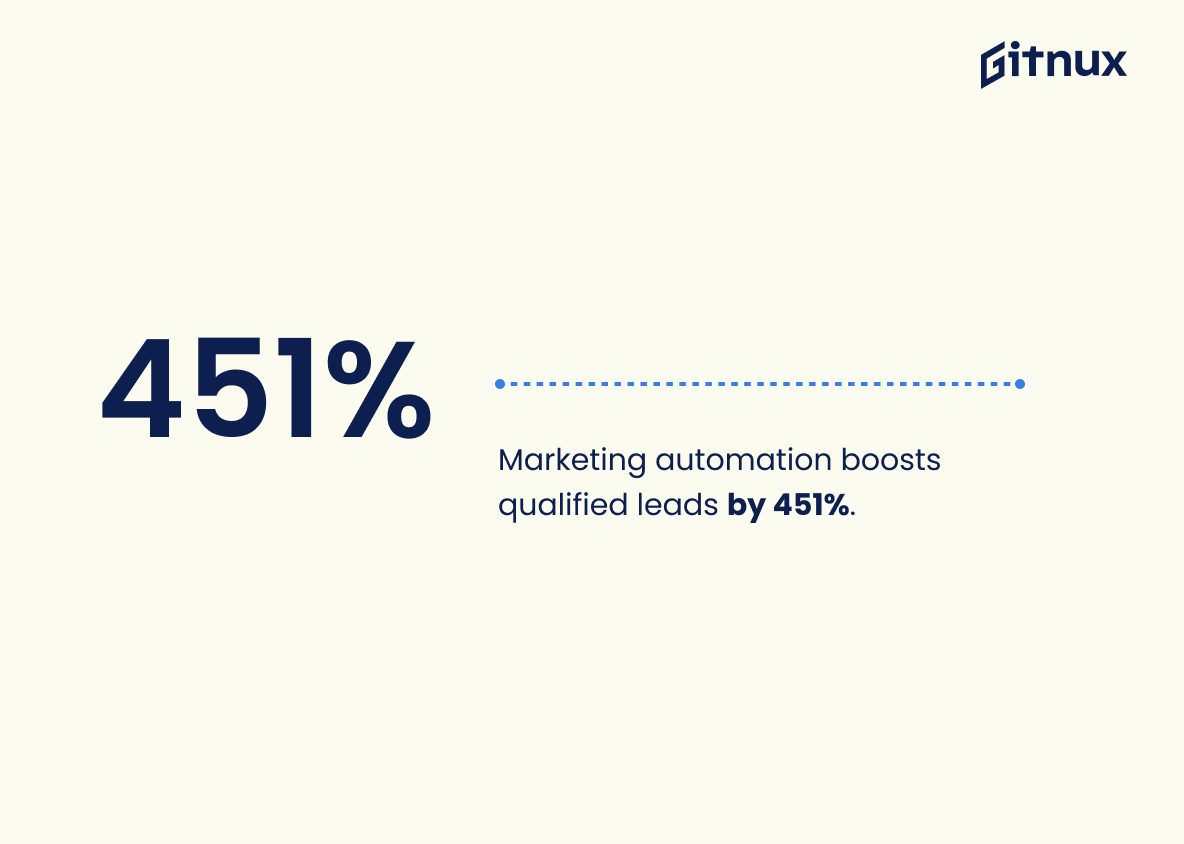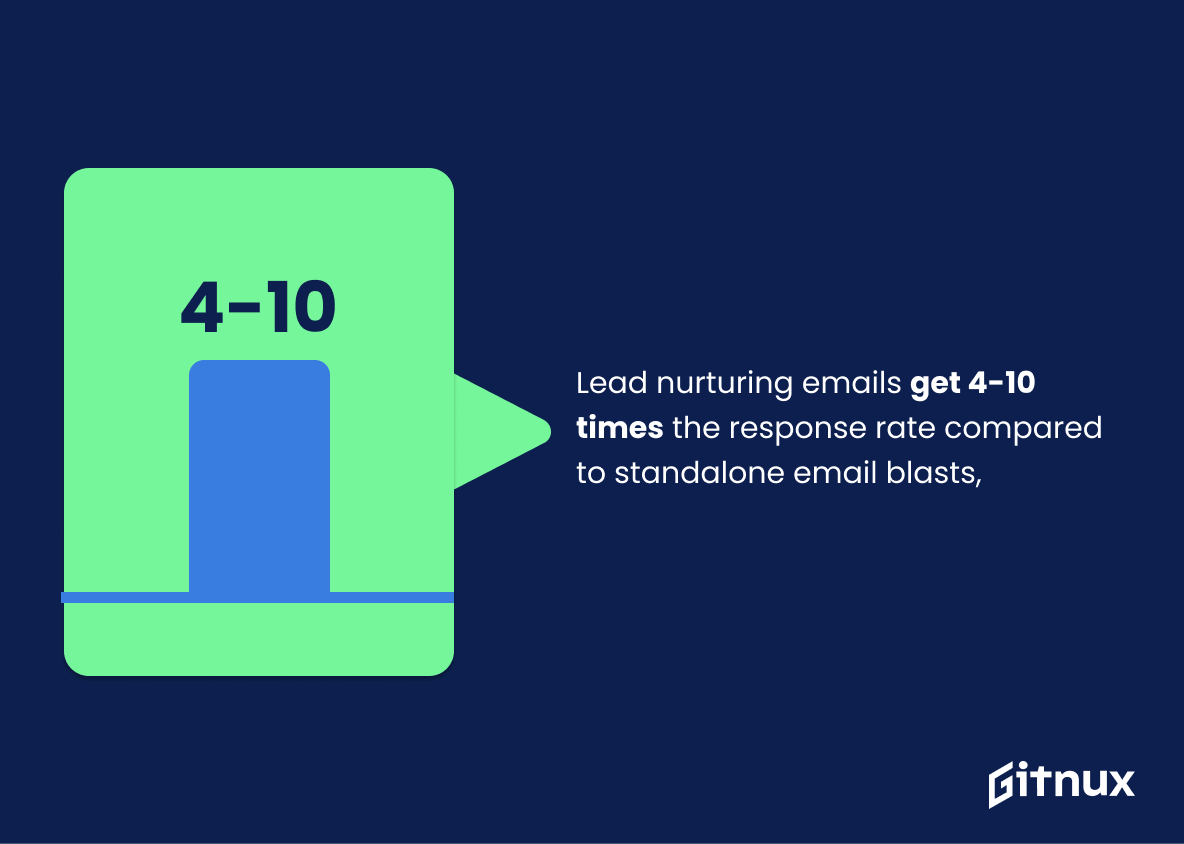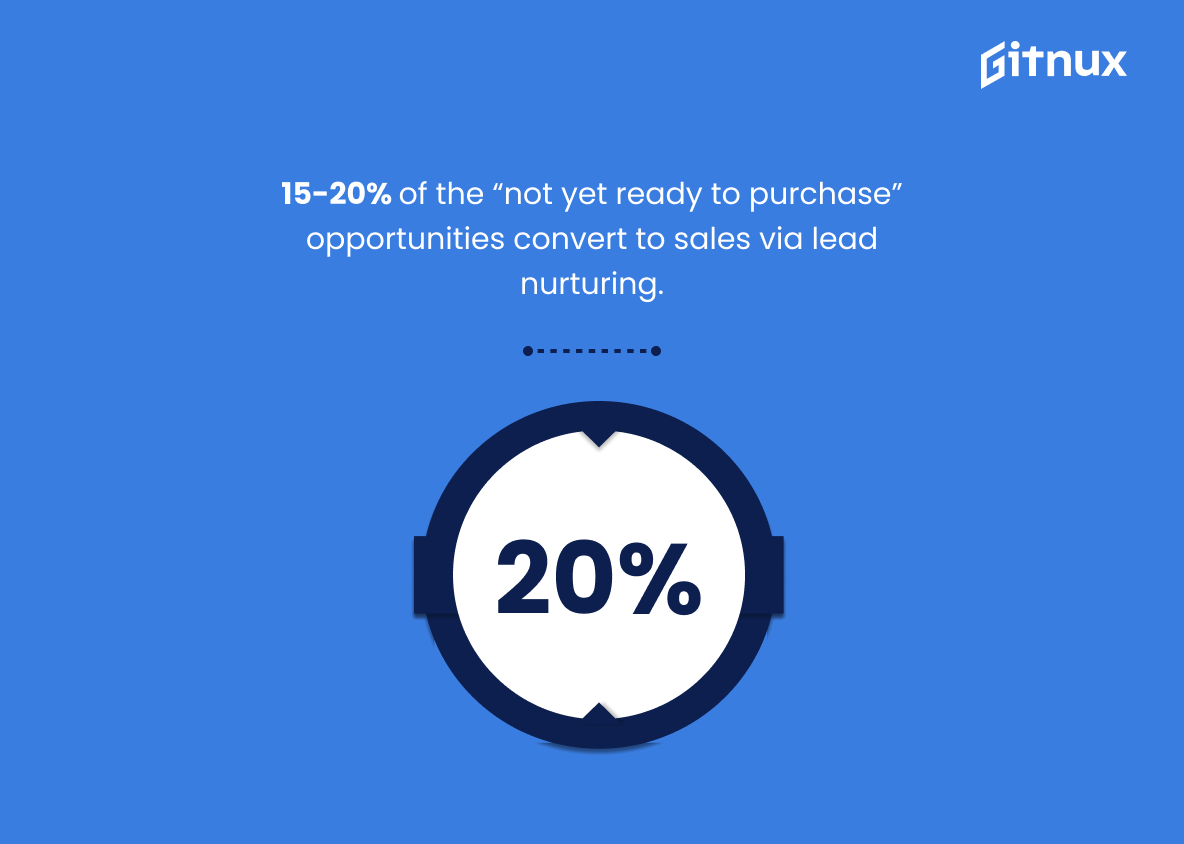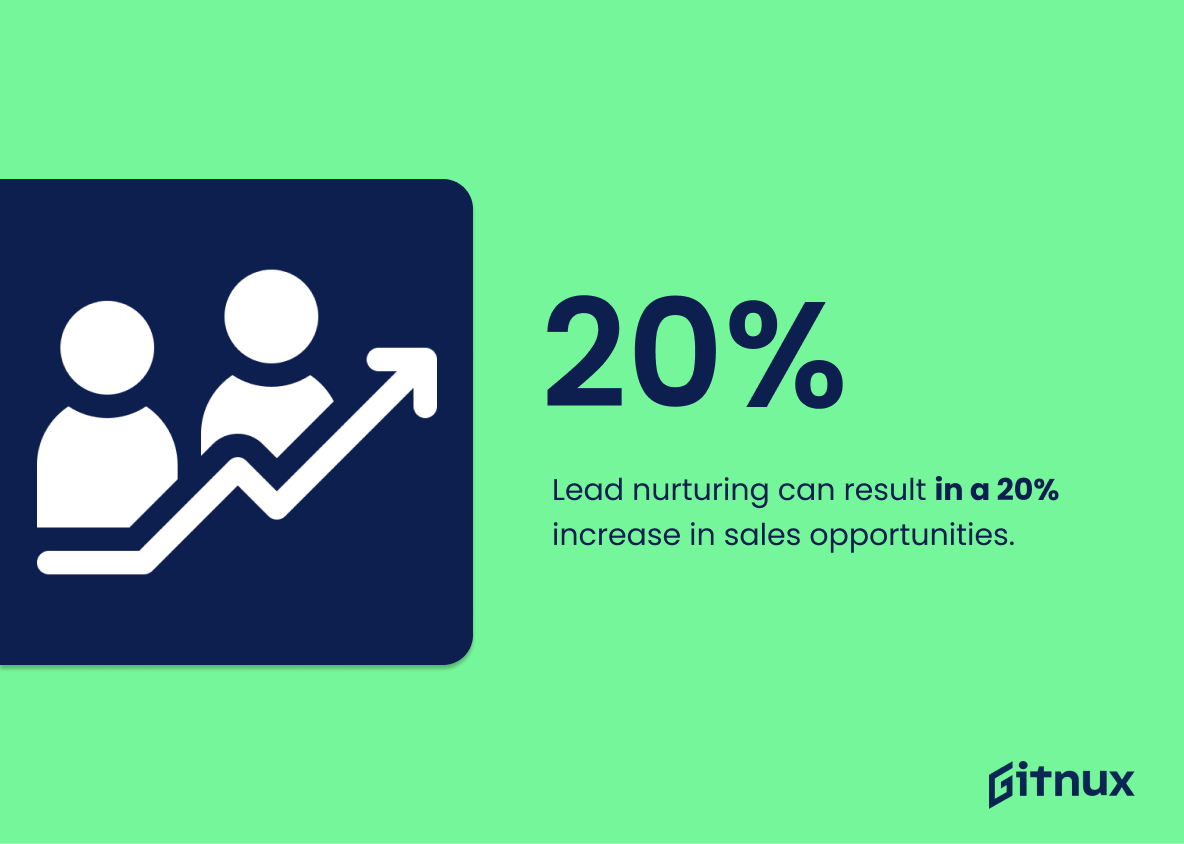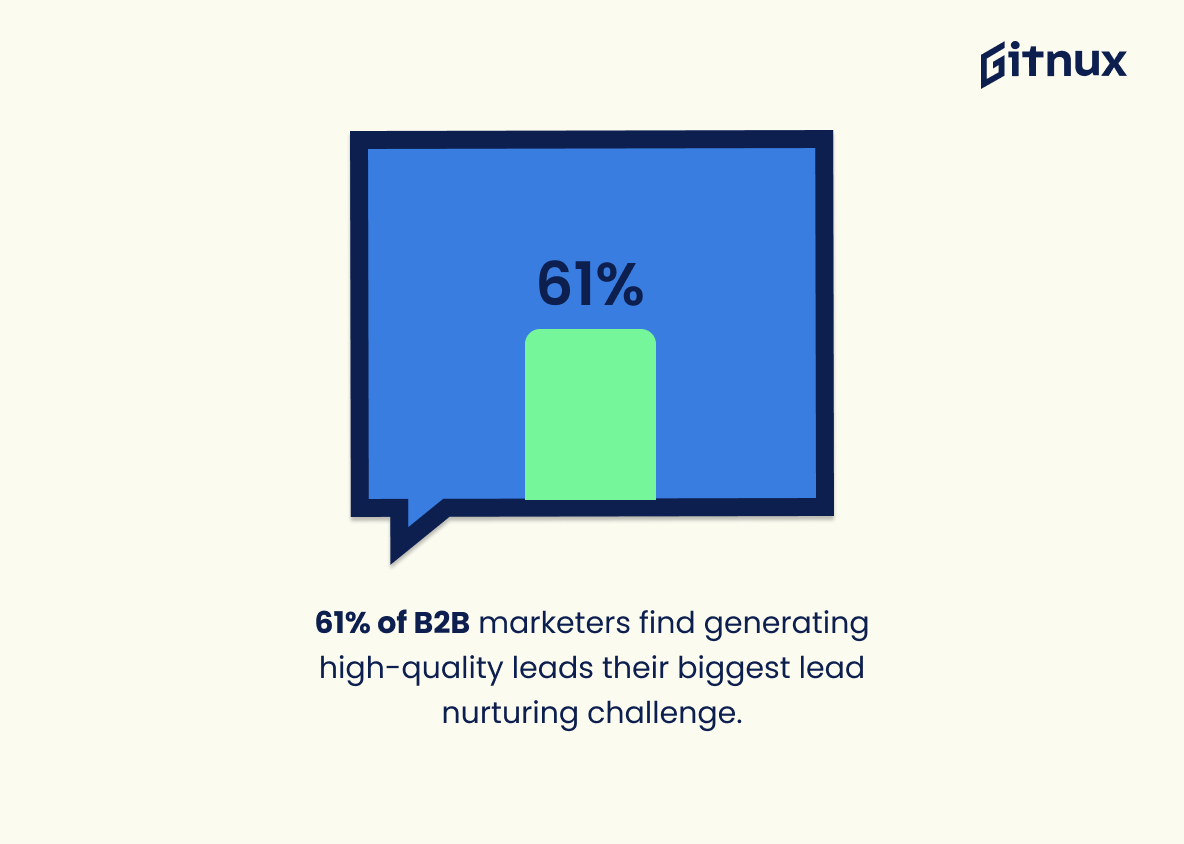In today’s fiercely competitive business landscape, ensuring a steady stream of viable leads isn’t just an advantage—it’s a survival necessity. But are all leads created equal, and is every warm lead inevitably set to become a conversion? The answer lies in the art and science of lead nurturing. Lead nurturing strategies are the lifeblood of your sales funnel, bridging the gap between initial interest and final conversion. Yet, the efficacy of these strategies isn’t an abstract concept—it’s backed by hard data.
In this blog post, we’ll delve deep into the world of lead nurturing statistics, serving up undeniable evidence of the power of successful lead cultivation. We’ll break down the numbers, share enlightening insights, and guide you towards mastering your own lead nurturing strategy. The truth is in the numbers—let’s get started.
The Latest Lead Nurturing Statistics Unveiled
79% of marketing leads never convert into sales. Lack of lead nurturing is the most common cause of this poor performance,
In the vast landscape of marketing, this compelling statistic paints a stark picture – a staggering 79% of marketing leads aren’t crossing the finish line into sales. This isn’t merely a fact, it’s a wake-up call, underscoring the critical importance of lead nurturing. It not only highlights an untapped potential but also unveils a prevalent pitfall in the marketing arena that could be remedied.
This remarkable statistic uncloaks the largely ignored aspect of lead nurturing, shedding light on its power to turn potential leads into fruitful sales. Think of it as the magnetic pull, the engaging conversation, the personal touch that directs 79% of the drifting leads right to your sale-doorstep. So, if your sales are running on empty, consider this statistic a compass pointing you towards the importance of an effective lead nurturing strategy in your marketing plan.
Companies who excel at lead nurturing generate 50% more sales-ready leads at 33% lower cost,
Just picture this; you’re sowing the seeds of your business success, with each lead representing a unique sapling. Now imagine enriching half of these saplings, making them ready to blossom into profitable outcomes at almost a third less cost. This is exactly what the showcased statistic highlights, underlining the efficiency and profitability potential of exceptional lead nurturing.
In the weighty arena of lead nurturing statistics, this stat is a beacon of insights. It efficiently sets the stage by unfolding a critical narrative — effective lead nurturing could be your business’s secret weapon to uncovering more robust, sales-ready leads without overstretching your resources. The image it projects affirms the quintessential value of superior lead nurturing in today’s saturated business ecosystem, compelling readers to invest further into this aspect of marketing strategy.
Nurtured leads make 47% larger purchases than non-nurtured leads,
Breathing life into the concept of lead nurturing, this powerful statistic – ‘Nurtured leads make 47% larger purchases than non-nurtured leads,’ serves as a lighthouse guiding marketers through the murky sea of customer acquisition. In a blog post swirling with statistical evidence, this percentage can’t help but to steal the spotlight.
It screams to companies across all industries that a solid nurturing strategy is not just a ‘nice-to-have’, but a ‘must-have’ if they aim to increase their purchase volume significantly. An important nugget of wisdom to carry away from this, is that optimum nurturing of leads doesn’t just fill up the sales funnel, but lines it with gold, boosting revenue in ways that might seem almost magical.
Approximately 65% of B2B marketers have not established lead nurturing,
“Peering through the lens of intriguing numbers, one may encounter the startling statistic that approximately 65% of B2B marketers have yet to establish lead nurturing. This almost feels like flipping the standard reasoning, stirring curiosity about why such a large proportion remains untapped in this essential marketing practice. In the territory of lead nurturing where conversions, customer loyalty, and revenue amplification are all at stake, this figure gives us pause.
It induces pondering amongst evangelists of the sales funnel methodology and champions of customer-centric approaches, making them wonder about the untapped potential. Through this alarming data point, the blog intends to spark discussion, encourage a shift in strategies, and inspire B2B marketers to reevaluate their lead nurturing approaches, thus fueling growth and enhancing customer relationships.”
68% of B2B organizations have not identified their funnel, blocking their ability to nurture leads,
In the bustling world of B2B organizations, a shocking statistic reveals that 68% are virtually navigating in the dark. Imagine sailing a ship without a dedicated course or fighting a war without a pre-planned strategy; it’s synonymous to that. These companies have not identified their funnel. This funnel is a critical component to lead nurturing.
With these companies sailing blind, they are inadvertently blocking their capability to foster, or “nurture”, potential leads. Every lead is a possibility; a possibly new customer, a new partnership, a new venture yet to be explored. However, without recognizing and actively utilizing their funnels, these organizations stumble and falter, unable to harness the full power of these potential opportunities.
In the landscape of lead nurturing, this statistic serves as a resonating wake-up call. It underscores the importance of systemizing campaigns to identify and guide leads through every step of the journey – from establishing first contact, to securing that final deal. Thus, it’s pivotal to understand, analyze, and act upon the fact that a majority of B2B organizations may currently be squandering the potential that effective lead nurturing brings to the table.
Only 29% of brands nurture their existing customers beyond the initial purchase,
Tipping the scales at merely 29%, this statistic paints a stark portrait about the condition of customer care post initial purchase. It weaves a tale of missed opportunities for brands seeking sustainable growth and customer loyalty. Within the realm of lead nurturing, this low figure is the blinking red light that signals brands to move beyond the single sales mindset and devote more energy to nurturing existing customers.
The figure emphatically serves as an unsung hero, a catalyst advocating for a paradigm shift, compelling brands to infuse more effort, time, and resources towards fostering relationships with current customers; it’s an undeniable call-to-action to unleash a brand’s full potential.
Companies that excel in lead nurturing have 9% more sales reps making quota,
Weaving together threads of insights from this particular statistic, one can sew a tapestry showcasing the correlation between skilled lead nurturing and increased sales success. It presents an amplifying effect – companies with exceptional lead nurturing landscapes have a higher percentage, 9% to be exact, of sales representatives meeting their quota. With the thrumming heart of any business being its sales, this statistic subtly illuminates the path to achieving higher financial figures.
More than just numbers, it offers a strategic perspective for the blog post, reinforcing the importance and effectiveness of lead nurturing in driving sales performance. For stakeholders who are in relentless pursuit to enhance their sales, this statistic serves as a compass pointing towards investing more time, resources and efforts in nurturing leads.
Businesses using marketing automation to nurture prospects see a 451% increase in qualified leads,
Imagine you’re a farmer who just discovered a miracle fertilizer, rocketing crop yield by an amazing 451% – it’s hard to not take notice of the sudden abundance. The same effect reverberates in the realm of lead nurturing, where the use of marketing automation acts as this game-changing stimulant.
The staggering escalation of qualified leads, up by 451%, couldn’t be more telling. It paints a vivid picture of the limitless potential in store for businesses opting to aggressively adopt and apply marketing automation for nurturing their prospects.
Given the growing cut-throat competition in the market, this futuristic tool could be your stealth weapon, turning the tide in your favor. Not only does it heighten the number of qualified leads but also enriches the quality and effectiveness of lead conversion process as a whole.
Therefore, in a blog post dissecting lead nurturing statistics, this eye-opening fact is no less than a trumpet call for businesses still on the fence about automation. Drawing from this statistic, businesses can grasp the sheer magnitude of opportunities available in elevating their lead nurturing efforts through marketing automation.
Lead nurturing emails get 4-10 times the response rate compared to standalone email blasts,
Diving into the intriguing world of lead nurturing statistics, the stat “Lead nurturing emails get 4-10 times the response rate compared to standalone email blasts” presents a compelling argument for any marketer looking to elevate their email strategy. It underscores a powerful insight – the impressive return potential of investing time, creativity, and resources in creating more personalized, targeted email campaigns.
This metric is a striking reality check for those who’ve rested on the laurels of traditional standalone email blasts, revealing that the real gold lies in nurturing leads. The enhanced engagement that comes with nurturing allows for improved conversions, establishing it as a vital tool in the marketer’s arsenal. This statistic, therefore, works as a lodestar, enlightening readers on real-world results – the high response rates achievable when the spotlight is placed on lead nurturing emails. So, transform your marketing playbook and start unlocking incredible email engagement today.
15-20% of the “not yet ready to purchase” opportunities convert to sales via lead nurturing,
Imagine a gold miner disregarding smaller nuggets of gold for the pursuit of the larger ones. This would be an inefficient and wasteful strategy as over time, these smaller nuggets would accumulate to a considerable amount – much too valuable to be overlooked. This analogy mirrors the statistic ’15-20% of the “not yet ready to purchase” opportunities convert to sales through lead nurturing’.
It showcases the value of perseverance in nurturing potential clients who may not be immediately ready to purchase. In the universe of lead nurturing, these opportunities may appear as smaller nuggets, yet they play an essential role, contributing significantly to overall sales. Thus, incorporating strategies to capture this 15-20% group is crucial, effectively transforming the ‘not-ready-to-purchase’ leads into definite sales.
Lead nurturing can result in a 20% increase in sales opportunities,
In the realm of lead nurturing, that 20% boost in sales opportunities is a golden nugget of information. While exploring this landscape, we uncover that this significant increase is akin to hitting the jackpot, making our marketing efforts all the more effective. An enhanced prospect pipeline culminates in stronger business growth and tells us that lead nurturing strategies are indeed worth their salt. This portion of numerical data serves not as just a number but as a motivator pushing businesses to up their lead nurturing game to uncover these hidden sales opportunities awaiting discovery.
61% of B2B marketers find generating high-quality leads their biggest lead nurturing challenge,
Unveiling the top hurdle faced by B2B marketers in the realm of lead nurturing, the fact that a staggering 61% of them find generating high quality leads as their utmost challenge, brings a scintillating point to the table. This captivating figure resonates in a blog emphasizing Lead Nurturing Statistics, offering a lens to the readers into the intricacies involved in lead generation.
Cutting down the abstract and shining a light on these marketers’ pain points, it injects relevancy. This unveils the imperative need for innovative solutions and strategies that effectively respond to this pressing challenge. Ultimately, it underscores the gravity of effective lead nurturing for maintaining a healthy pipeline and achieving sustainable growth.
Conclusion
In comprehensive retrospect, understanding and interpreting Lead Nurturing Statistics efficiently can make a substantial difference in any organization’s marketing strategy. It not only equips you with essential insights about your leads but also allows you to optimize your approach by improving engagement, conversion rates, and ROI.
Positive lead nurturing can significantly enhance customer relationships, reduce sales cycle length, and ultimately drive exponential business growth. Remember, in today’s highly competitive business environment, effective lead nurturing is not just an option; it’s an absolute necessity. Stay driven, stay informed, and ensure your lead nurturing strategy is data-driven at all times.
References
0. – https://www.www.marketingprofs.com
1. – https://www.blog.marketo.com
2. – https://www.blog.hubspot.com
3. – https://www.www.hubspot.com
4. – https://www.www.shopify.com
5. – https://www.www.marketo.com
